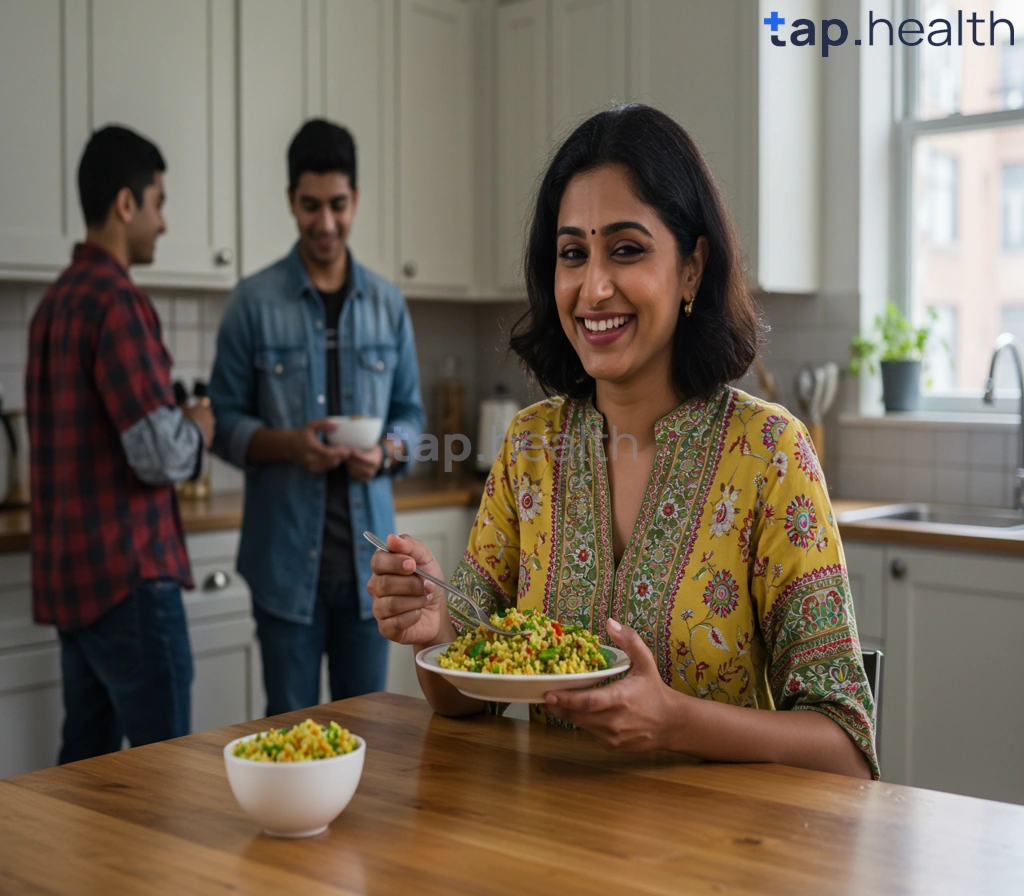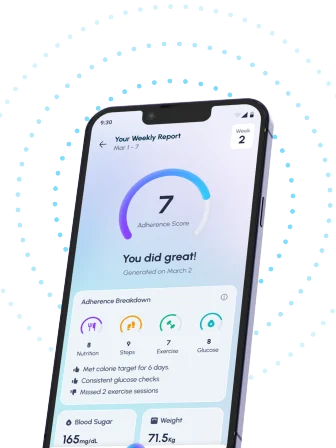Living with diabetes requires careful attention to what you eat, and lunch is no exception. A balanced, nutritious lunch can play a big role in controlling your blood sugar levels and keeping you energized throughout the day. But with so many options, it can be difficult to know what to eat for lunch if you’re diabetic.
In this guide, we’ll explore what you can eat for lunch if you’re living with diabetes. We’ll discuss the types of foods that are good for you, provide healthy lunch ideas, and answer some frequently asked questions. Whether you’ve been diagnosed with diabetes or are simply looking for healthier lunch options, this guide will provide valuable insights that are easy to understand.
Why is Lunch Important for People with Diabetes?
Lunch is an important meal for everyone, but for people with diabetes, it takes on an even more significant role. Here’s why:
- Blood Sugar Control: What you eat at lunch can help regulate your blood sugar levels. Consuming foods high in fiber, protein, and healthy fats can prevent blood sugar spikes and crashes.
- Sustained Energy: A balanced lunch helps you avoid mid-afternoon energy slumps. Healthy, nutrient-dense foods provide lasting energy to get you through the rest of the day.
- Weight Management: Diabetes and weight management often go hand-in-hand. Choosing the right foods can help you manage your weight effectively, which is crucial for controlling diabetes.
Now that we know how important lunch is, let’s dive into some lunch options for diabetics.
Key Considerations for a Diabetic-Friendly Lunch
When planning lunch, it’s essential to keep in mind a few key considerations to help control blood sugar levels and support overall health:
- Carbohydrate Control: Carbs have a direct impact on blood sugar levels, so it’s essential to choose your carbohydrate sources wisely. Focus on whole grains, vegetables, and legumes, and avoid refined carbohydrates like white bread and sugary foods.
- Protein: Protein helps stabilize blood sugar and promotes satiety, so including a good source of protein in your lunch is important. Examples include lean meats, fish, eggs, tofu, and legumes.
- Healthy Fats: Healthy fats like avocado, nuts, seeds, and olive oil are great additions to a diabetic-friendly lunch. They help control blood sugar and promote heart health.
- Fiber: Fiber helps slow the absorption of sugar into the bloodstream, preventing blood sugar spikes. Aim to include high-fiber foods such as leafy greens, whole grains, legumes, and fruits.
- Portion Size: Even healthy foods can affect blood sugar if eaten in large quantities. Be mindful of portion sizes, especially when it comes to high-carb foods.
Healthy Lunch Ideas for Diabetics
Let’s explore some delicious, diabetic-friendly lunch ideas. These options are nutritious, easy to prepare, and sure to satisfy your hunger without compromising blood sugar control.
1. Grilled Chicken Salad
A simple yet satisfying option, a grilled chicken salad is a great way to get lean protein, healthy fats, and fiber in one meal. Here’s how you can make it:
- Ingredients:
- Grilled chicken breast (sliced)
- Mixed greens (spinach, kale, arugula)
- Cherry tomatoes
- Cucumber
- Red onion
- Avocado
- Olive oil and balsamic vinegar dressing
- Salt and pepper to taste
- Why It’s Good for Diabetics:
- Chicken provides lean protein, which helps stabilize blood sugar.
- Mixed greens are high in fiber and low in calories, helping to manage blood sugar.
- Avocado adds healthy fats to keep you full longer.
2. Quinoa and Roasted Veggie Bowl
Quinoa is a great source of plant-based protein and is high in fiber. Combine it with roasted vegetables for a balanced and filling lunch.
- Ingredients:
- 1 cup cooked quinoa
- Roasted vegetables (zucchini, bell peppers, sweet potatoes, and carrots)
- Fresh cilantro
- Lime juice
- Olive oil
- Salt and pepper
- Why It’s Good for Diabetics:
- Quinoa is a whole grain that is low on the glycemic index, meaning it won’t cause large blood sugar spikes.
- Roasted vegetables are rich in fiber and antioxidants, which help manage diabetes.
3. Salmon and Asparagus
Salmon is an excellent source of omega-3 fatty acids, which are beneficial for heart health—a key concern for people with diabetes.
- Ingredients:
- Salmon fillet
- Asparagus
- Olive oil
- Lemon
- Salt and pepper
- Why It’s Good for Diabetics:
- Salmon is rich in protein and omega-3s, which help reduce inflammation and support heart health.
- Asparagus is a low-carb, high-fiber vegetable that helps regulate blood sugar.
4. Chickpea Salad Wraps
Chickpeas are a great source of plant-based protein and fiber, making them an excellent choice for a diabetic-friendly lunch.
- Ingredients:
- 1 cup cooked chickpeas
- Chopped cucumber
- Diced tomato
- Chopped red onion
- Fresh parsley
- Whole wheat wraps
- Tahini dressing
- Why It’s Good for Diabetics:
- Chickpeas are high in fiber and protein, which help stabilize blood sugar.
- The wraps are made with whole wheat, providing complex carbs that are digested slowly.
5. Egg and Avocado Toast
For a quick and easy lunch, an egg and avocado toast is both filling and blood-sugar-friendly.
- Ingredients:
- Whole grain bread
- 1 egg (fried or scrambled)
- Half an avocado
- Salt and pepper
- Red pepper flakes (optional)
- Why It’s Good for Diabetics:
- Whole grain bread provides fiber, which helps control blood sugar.
- Avocados are rich in healthy fats and fiber, promoting satiety.
- Eggs provide protein without spiking blood sugar.
6. Vegetable Stir-Fry with Tofu
Stir-fries are a great way to get a variety of vegetables in one meal, and tofu provides a plant-based protein option.
- Ingredients:
- Firm tofu
- Bell peppers, broccoli, and snap peas
- Soy sauce (low-sodium)
- Olive oil
- Garlic and ginger
- Why It’s Good for Diabetics:
- Tofu is a great plant-based protein that helps stabilize blood sugar.
- The vegetables are low in carbs and rich in fiber.
7. Turkey Lettuce Wraps
For a light and low-carb option, try turkey lettuce wraps. They’re refreshing and easy to customize.
- Ingredients:
- Lean turkey breast slices
- Romaine lettuce leaves
- Sliced cucumber, tomatoes, and avocado
- Mustard or low-fat mayo for extra flavor
- Why It’s Good for Diabetics:
- Turkey is lean protein, which helps prevent blood sugar spikes.
- Lettuce provides fiber and is very low in carbs.
Foods to Avoid for Diabetics
While there are plenty of healthy options for lunch, there are also foods you should limit or avoid entirely to help manage blood sugar levels. Some of these include:
- Refined Carbohydrates: White bread, pasta, and baked goods made with refined flour can cause quick blood sugar spikes.
- Sugary Drinks: Sodas, sweetened teas, and juices can rapidly increase blood sugar levels.
- Fried Foods: Fried foods are high in unhealthy fats that can negatively impact blood sugar and heart health.
- Processed Meats: Bacon, sausage, and deli meats are often high in sodium and unhealthy fats, which can worsen diabetes-related complications.
Frequently Asked Questions (FAQs) on What Can a Diabetic Eat for Lunch?
1. Can diabetics eat bread for lunch?
Yes, diabetics can eat bread, but it’s best to choose whole grain or whole wheat bread, which is high in fiber and helps regulate blood sugar. Avoid white bread as it can cause blood sugar spikes.
2. What should I eat for lunch if I’m on insulin?
If you’re on insulin, it’s important to eat balanced meals that include protein, healthy fats, and complex carbohydrates. Always pair carbs with protein and fiber to prevent blood sugar fluctuations.
3. Can I eat fruit for lunch?
Yes! Fruits like berries, apples, and pears are great choices for diabetics. They’re packed with fiber and antioxidants. Just be mindful of portion sizes, as fruit contains natural sugars.
4. How often should I eat lunch if I’m diabetic?
It’s a good idea to eat three balanced meals per day, with snacks in between if needed. This helps maintain stable blood sugar levels and prevents overeating.
Conclusion
Finding lunch options that are both delicious and diabetic-friendly doesn’t have to be difficult. By focusing on lean proteins, healthy fats, high-fiber vegetables, and whole grains, you can create meals that support blood sugar control and overall health. Remember, managing diabetes is all about making informed choices and finding a balance that works for you.



